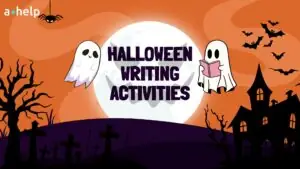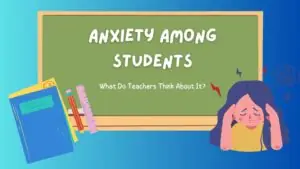Faculty Focus has recently shared an article showing which learning strategies work better than simple memorization. And it seems that the key to actually make students remember what they’ve learned lies in facilitation of meaningful learning experiences.

✅ AI Essay Writer ✅ AI Detector ✅ Plagchecker ✅ Paraphraser
✅ Summarizer ✅ Citation Generator
Key Takeaways
- Active learning trumps passive listening for knowledge retention, urging students to engage and challenge course material.
- Building connections between new concepts and existing knowledge through diverse strategies helps make students’ understanding stronger.
- Peer-based and experiential learning activities are central to reinforcing subject matter and are more effective compared to traditional study methods.
Most students struggle to learn not because they can’t really memorize anything. The reality is, they may do good on exams, but still not remmeber anything they studied during theier classes. This problem touches upon the prefernce for short-term memory vs long-term knowledge retention in modern classrooms. Faculty Focus decided to explore this issue and find new ways of helping students keep the information they’ve learned in their brains.
Cultivating Engagement in the Classroom
There’s this concept called the Learning pyramid. It represents the hierarchy of learning strategies that we have at our reach today. What it shows, is that traditional lectures lead to only 5% knowledge retention, whereas teaching others (one of participatory learning methods) can boost retention up to 90%.

With such statistics it’s clear that the path to deeper learning lies in active participation rather than passive reception.
Active learning is not a new concept. At its core, this technique allows students to integrate new knowledge with existing schemas, enhancing their retention.
“when students create links between new and existing knowledge, they generate retrieval cues that help them recall the information more efficiently.”
It sounds a lor more effective than puree memorizing, yet somehow, teachers are still reluctant to implement the whole variety of strategies implied by this notion into their curricula. We’ve decided to dig a bit deeper into the research provided by Faculty Focus and learned a whole lot of new ways in which active learning can be integrated into evryday teaching practices.

Active Learning Strategies Both Teachers and Students Need To Get On
Faculty Focus intially outlines 7 techniques that engage students in the learning process, alongside 4 ways to include learners in collaborative work. We decided to highlight some of them.
First of, brainstorming and concept mapping are mentioned. We decided to put these two together because they actually work well in a pair. Brainstorming implies asking students what they already know about the topic that is going to be discussed and listen to what they think about it. This sets the base for the further buld uo of information. Concept mapping is initially a visualization technique that includes representing the concepts students work on in some kind of a map form. For this reason, both strategies can be used together to help students create a more concrete idea of what they are goinf to learn in class and cultivate the feeling of participation in the lesson.
Think-Pair-Share was another mentioned technique dedicated toward promoting confidence and articulation of ideas in the class. Students are asked to think of the ways the newsly received information can be applied to their existent knowledge. They can then either share it with one of their peers or the entire class and therefore help the teacher initialize the further discussion of the topic.
One other technique that was also advised to be incorporated into the classroom routine was the ‘Do It Like Socrates’ method. This one is dedicated to encouraging critical thinking by asking open-ended questions to help students explore and articulate their understanding of new information in relation to their existing knowledge. Moreover, it also fosters a culture of debate and promotes active engagement as well as sharpens students’ communication skills and critical thinking abilities.
Peer and Group-Based Activities
Creating an environment that promotes collaboration and engagement is key to improving retention rates. Techniques like the Jigsaw method, fostering a culture of debate, and using gallery walks (when all the materials are presented as gallery exposition) can make learning more interactive and enjoyable.
The Jigsaw method, for example, initially involves active learning and cooperative teaching where students work in small groups to become experts on different subtopics of a larger subject. The name “Jigsaw” comes from the idea that each student’s part of the learning is like a piece of a puzzle, and when put together, they form a complete picture of the topic.
Peer instruction using audience-response systems like Kahoot or Menti can also encourage active participation and reinforce learning in a fun and interactive way.
Assessing and Ensuring Retention
To make sure that students retain the material, it’s important to have strategies for assessing their understanding
Teachers can ask students to answer one question in the end of the lesson before leaving the calss (Ticket-out-the-door method). This way the can still keep the learning process under control while giving students space for reflection and own interpretation of the class materials. Self-assessment activities and frequent low-stake quizzes can also become valuable tools to help instructors gauge student retention and empower students to take responsibility for their learning.
The Key Point
Teaching students to actually learn something and not just memorize and forget is neither easy nor quick. But the implementation of the said strategies can actually make a difference in the classrooms nationwide. Isn’t the main point of education to give learners long-term knowledge that will help them in their future life and make them educated human beings? So maybe it’s time to get the “out of sight out of mind” approach out the door and change the approach to teaching andlearning altogether.
Follow us on Reddit for more insights and updates.





Comments (0)
Welcome to A*Help comments!
We’re all about debate and discussion at A*Help.
We value the diverse opinions of users, so you may find points of view that you don’t agree with. And that’s cool. However, there are certain things we’re not OK with: attempts to manipulate our data in any way, for example, or the posting of discriminative, offensive, hateful, or disparaging material.